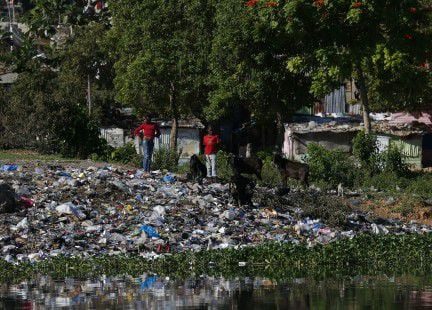
A quarter of the rivers analyzed for a global study have potentially toxic levels of active pharmaceutical ingredients (AFPs) and the highest average accumulated concentrations have been observed in the riverbeds of cities such as Lahore (Pakistan), La Paz and Addis Ababa.
A team analyzed the concentrations of 61 active ingredients in 1,052 places along 258 rivers in 104 countries, including the Thames or the Amazon as it passes through Brazil, which represents the environmental influence on 471.4 million people, and their results They are published by the scientific journal PNAS, of the Proceedings of the National Academy of Sciences of the United States.
The study points out that pharmaceutical contamination affects water on all continents. The most contaminated European samples came from a collection campaign in Madrid; those of North America were taken in San José de Cota Rica and in Australia they corresponded to the city of Adelaida.
The research highlights that more than a quarter of the sampling sites had at least one PAF that exceeded levels considered safe for aquatic organisms or that were implicated in antimicrobial resistance, results that the authors say demonstrate the scale of pharmaceutical contamination in the environment.
The highest cumulative concentrations of these pollutants were observed in sub-Saharan Africa, South and South Asia, in low- and middle-income countries, and in areas associated with poor sewage and waste management infrastructure.
The research identifies the cities of Lahore (Pakistan), La Paz and Addis Ababa as those with the highest average accumulated concentrations of these substances.
The active pharmaceutical ingredients most frequently detected in the rivers analyzed were the antiepileptic carbamazepine, the antihyperglycemic drug metformin, and caffeine.
Other contaminants found in potentially harmful concentrations included propranolol (for heart problems such as high blood pressure); sulfamethoxazole (antibiotic against bacterial infections) or loratadine (antihistamine).
The highest concentration for any PAF was for acetaminophen at a sampling site on the Río Seke (La Paz), where the team observed evidence of septic tank depletion and garbage dumping upstream of the sample collection site.
Environmental exposure to active pharmaceutical ingredients harms ecosystems and potentially human health through mechanisms such as antimicrobial resistance.
Rivers such as the Amazon, the Mississippi, the Thames and the Mekong were sampled in places as diverse as a Yanomami village in Venezuela, to Delhi, London, New York, Las Vegas, Lagos (Nigeria) and Caton (China). .
The study is part of the Global Surveillance Project for Pharmaceutical Products, led by the University of York (Canada) and represents the first global investigation of the contamination of medicines in the environment.
The researchers hope that by increasing surveillance of pharmaceuticals in the environment, strategies can be developed to limit the effects potentially caused by the presence of contaminants.
The co-director of the Global Pharmaceutical Surveillance Project, John Wilkinson, said that pharmaceuticals have been known to reach the aquatic environment for more than two decades where they “can affect the biology of living organisms.”
However, most of the available data was focused on “a few areas” in North America, Western Europe and China, although with this new project the knowledge about the global distribution of pharmaceuticals in the aquatic environment “has increased considerably”.
Source: Gestion
Ricardo is a renowned author and journalist, known for his exceptional writing on top-news stories. He currently works as a writer at the 247 News Agency, where he is known for his ability to deliver breaking news and insightful analysis on the most pressing issues of the day.











